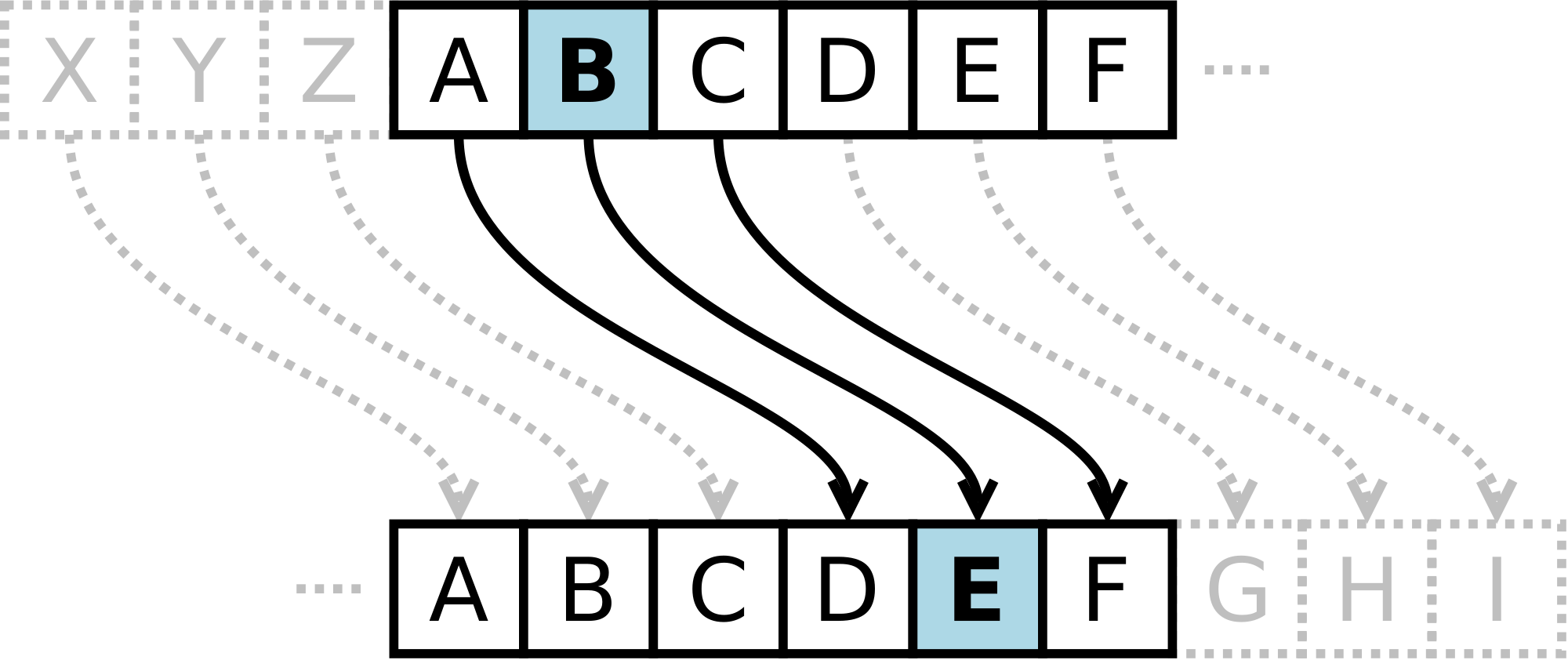Índice
1. Description
2. User Definition & User Stories (UX)
3. Aceptance Criteria
4. Technical Requirements
5. Hacker edition
6. Expected Learning Outcomes
Application to perform a cipher and decipher process, built with JavaScript, HTML 5 & CSS3.
User: Security Chief of a Club
-
The user wants to hide the meaning of a message and encrypt it.
-
The user wants to share the application to selected people to be able to decript the messages
-
The user wants to encrypt and decript message with strings
This applications should allow the user to encrypt messages and also allow to decrypt the message. Should be responsive and in a ulr to share it and be used from a cellphone to other dispositive screen like a desktop.
- Pair work and allowed peer programming between teams
- Fork this repository
- Follow the folder structures dividing per languages: JS, CSS, HTML5
- Make a full responsive website consider at least 2 types of dispositives, cellphone and desktop.
- Follow up Semantic HTML rules, have title, footer, center content and visual alignment.
- If required, create an Assets folder
- Document every Agile SDLC on ReadMe.md
- Fork this repository with the st up of the project to run testing on the boilerplate
- Plan and execute Unit Testing
- Install dependencies with
npm install - Run Unit testing with
npm test
The boilerplate contains a file structure as a starting point like thisas all the sample dependencies and tests configuration:
./
├── .editorconfig
├── .eslintrc
├── .gitignore
├── README.md
├── package.json
├── src
│ ├── cipher.js
│ ├── index.html
│ ├── index.js
│ └── style.css
└── test
├── cipher.spec.js
├── headless.js
└── index.html
README.md: should explain how to download, install and run the application as well as an introduction to the application, its functionality and decisions about design they took.src / index.html: this is the entry point to your application. This file it must contain to markup (HTML) and include the necessary CSS and JavaScript.src / cipher.js: here you must implement the cipher object, which must be exported in the global object (window). This object (cipher) must contain two methods:cipher.encode (offset, string):offsetis the number of positions to we want to move to the right in the alphabet andstringthe message (text) that we want to encrypt.cipher.decode (offset, string):offsetis the number of positions to we want to move left in the alphabet andstringthe message (text) that we want to decipher.
src / index.js: here you must listen to DOM events, invokecipher.encode ()orcipher.decode ()as needed and update the result in the UI.test / cipher.spec.js: this file contains some sample tests and here you will have to implement the tests forcipher.encode ()andcipher.decode ().
CLUES:
charCodeAt()method of Strings- Caesar Cipher
- Use the Caesar Cipher like was used before in ancient times to substitute one lettet to another pushed from the position number of their code.
- Emperor Julius Caesar used it to send orders to his generals in the battlefields, is one of the simplest and most widely used techniques to encrypt a message.
- For example if we used an offset of 3:
- Clear alphabet: A B C D E F G H I J K L M N O P Q R S T U V W X Y Z
- Encrypted alphabet: D E F G H I J K L M N O P Q R S T U V W X Y Z A B C
Currently all simple alphabetic substitution ciphers are decrypted easily and in practice does not offer much security in communication, but Caesar encryption can often be part of more complex systems encryption, such as Vigenère encryption, and even has application in the ROT13 system.
Additional Resources
- Follow Michelle
- Learn more
charCodeAt() - Learn about
String.fromCharCode() - Find about
ASCII - Documentación de NPM
These are some tips that can help you in organizing and carrying out your project, taking into account the development of your soft skills:
- To start an organization of your project, see with what resources accounts and the time you have to complete it.
- If there is something that you do not know, ask and try to solve it; you can start with a google search, then consulting your squad and finally your coach. If there is something that I do not know, someone else can help me. Learning is a collaborative process.
- Once you start to move forward ask for feedback, your colleagues may have excellent ideas or ways to solve the project that can help you.
- When you run into a problem, look for alternatives, and for that, consult different sources.
- If you already see yourself investing a lot of time in details, you should know how to prioritize and stick with the most important, projects have limited time and you must know how to manage it.
- Work as a team, ask questions and try to complete the project without giving up.
- Prepare your presentation, if I cannot communicate my ideas to others I do not know You will appreciate all the effort and work you put into it.
You are not limited to implementing only the mandatory part. We suggest you create also a cipher.createCipherWithOffset () function that receives an offset and
return a new object with two methods (encode and decode) that only receive the string and use the offset that was passed to createCipherWithOffset at the time
creating the object.
- window object
- Functions
- Objects
- String methods to get codes
- My first team collaboration project using Continuous Integration Tools: Git & GitHub
- My first Unitary Testing
This Readme should be replaced with the project documentation following the SDLC procedures for Agile Software Development Lyfe Cycle.

